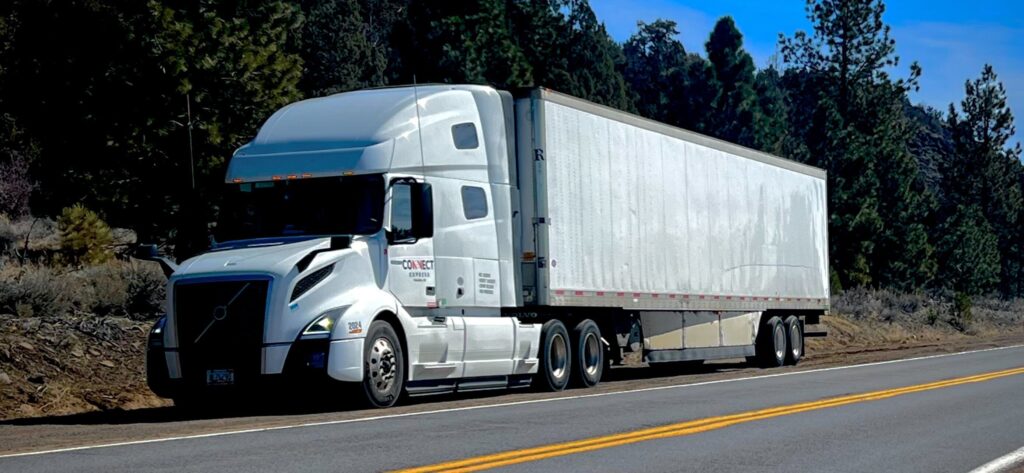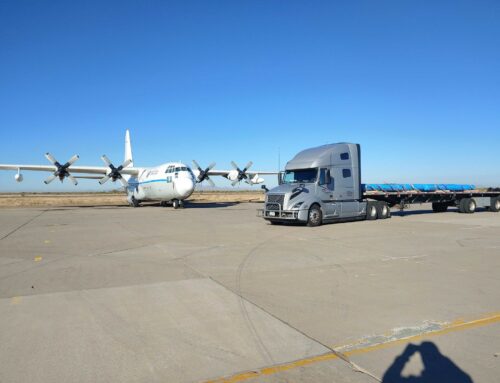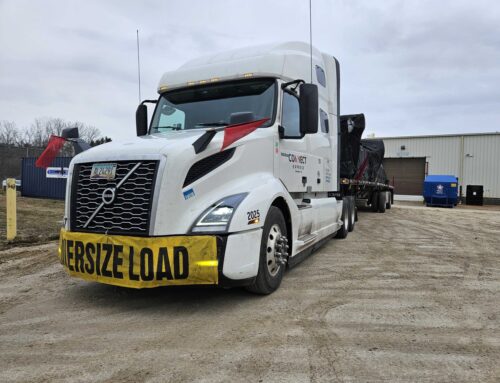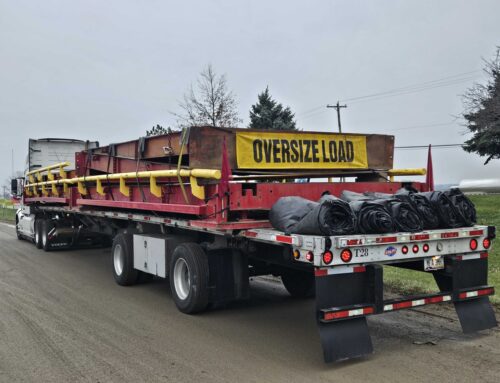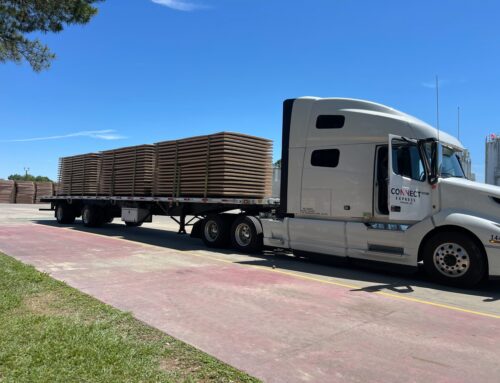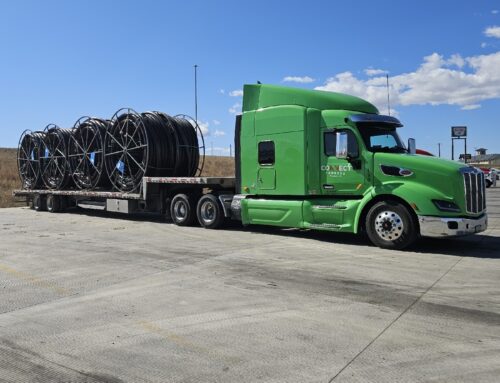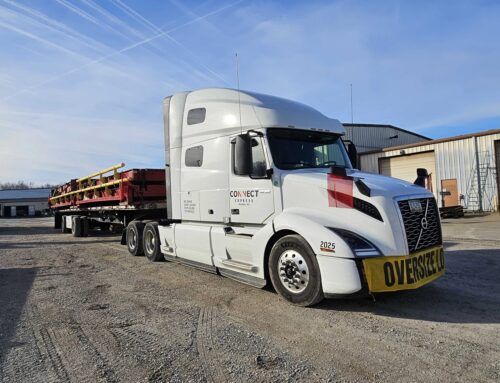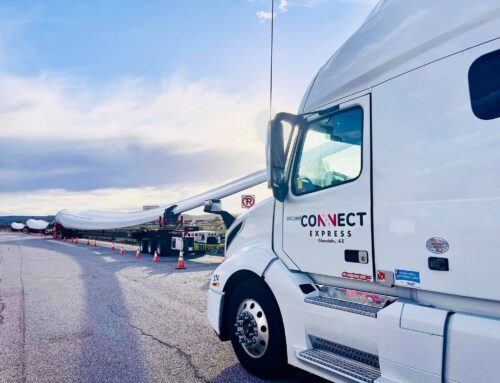
CDL Driver Jobs Available Now!
The transport sector consistently displays remarkable resilience, weathering myriad economic climates with steadfast determination.
Opportunities for CDL drivers abound, offering stable employment with competitive compensation across the nation.
With an ever-increasing demand for skilled professionals to navigate the arteries of commerce, CDL driver positions await the ready and able.
Understanding CDL Classes
Commercial Driver’s License (CDL) credentials are essential for operating heavy, large, or hazmat vehicles.
Classes A, B, and C denote the type of vehicle and cargo a driver is authorized to handle. Each class reflects different requirements, ensuring the safety standards of the road are maintained.
Class A licenses allow the operation of trucks with trailers over 10,000 pounds GVWR.
Class A: Long-Haul Vehicles
Possessing a Class A CDL empowers drivers to operate articulated vehicles, primarily known for their long-distance capacities, carrying diverse loads across states. Mastery in maneuvering these giants is essential to ensure safe and timely deliveries.
Dedicating oneself to the Class A long-haul route is a commitment to the lifeline of American commerce, bearing the responsibility of seamless interstate transportation. It demands proficiency in handling high GVWR rigs, conforming to the intricate compliance regulations across various jurisdictions.
The average Class A vehicle travels enough miles to circumnavigate the globe annually.
As Class A operators, drivers become the backbone of freight movement, dealing with an array of cargo types, from construction materials to perishable goods. Not only are their skills critical to logistics, but they also play a pivotal role in maintaining America’s economic vitality.
Class B: Heavy Trucks
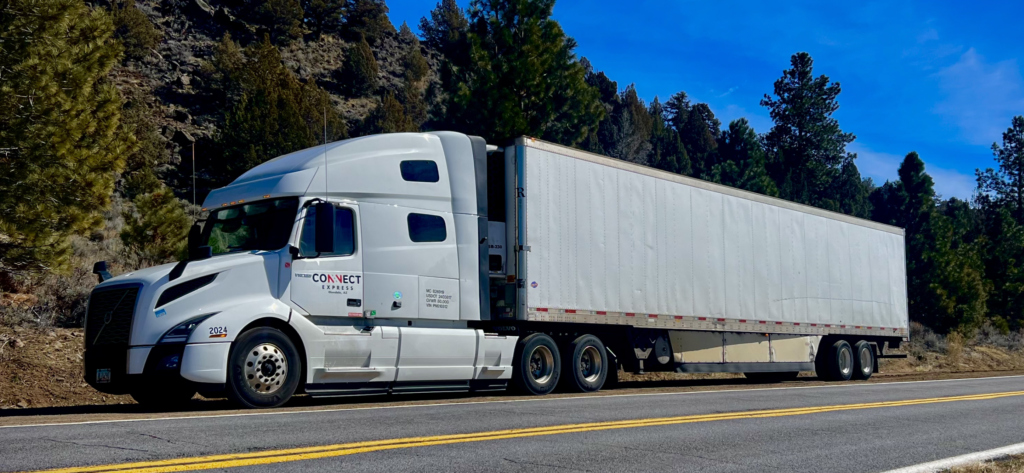
Class B CDL holders are indispensable in operations involving heavy trucks, offering a unique skill set for safe transportation. These specialized drivers are adept at maneuvering vehicles that are significant in size and weight, ensuring that loads arrive unscathed and on schedule.
Their expertise extends to a variety of vehicle types within this category. Drivers operate with precision, cognizant of the extensive safety protocols necessary to handle such substantial machinery.
Furthermore, Class B professionals are often tasked with the transport of building materials, heavy machinery, or waste—assignments that require meticulous attention to detail and nuanced understanding of cargo securement regulations.
Maintaining a clean driving record is paramount for these professionals, who must navigate congested urban streets or traverse extensive rural routes. The demands of Class B driving necessitate a firm grasp of DOT regulations and an unwavering commitment to safety.
Their role is instrumental in construction projects, waste management, and local distribution, often making them the unsung heroes within the logistics ecosystem. Their ability to operate various heavy-duty vehicles bolsters the supply chain’s resilience, facilitating the seamless execution of numerous integral processes.
Exceptionally, a career as a Class B driver offers a stable pathway within the industry. With opportunities for local routes and a diverse array of specialized freight, it’s an attractive option for those seeking a trucking career close to home.
Class C: Smaller Transports
Class C CDL holders operate lighter vehicles that do not fall under Class A or Class B requirements. These drivers typically handle smaller, more sensitive cargo that demands precision and care during transit.
For instance, Class C drivers might transport hazardous materials, oversee the delivery of essential mail and packages, or manage a mobile library. Their work requires an acute understanding of safety protocols, the adherence to stringent HAZMAT regulations, and the ability to perform under tight schedules. Often, these drivers are the final link in the supply chain, making their role crucial for time-sensitive deliveries.
Such roles necessitate drivers who are adept at customer service and can work comfortably in urban environments. With their specialized skills, Class C CDL holders are indispensable for operations that value punctuality and reliability, ensuring that businesses and consumers alike receive their goods in a timely manner.
The allure of Class C driving jobs lies in their typically regular hours and the possibility of less physically demanding work when compared to hauling larger loads. These positions often offer an appealing work-life balance and may be particularly suitable for individuals who are skilled at navigating complex bureaucratic landscapes, maintaining detailed logs, and providing superior customer service while on the road.
Nationwide CDL Job Outlook

The current climate for CDL professionals is robust, with a sustained demand characterizing the trucking industry’s landscape. Companies are vying for skilled drivers to maintain the essential flow of goods across our nation, with Class A CDL holders being especially sought after due to their capability to operate a wide range of heavy-duty vehicles. This demand is projected to persist, linked to economic growth and the continuous need for logistic support in diverse sectors, thus promising a stable employment environment for CDL-certified drivers.
Industry Demand
The trucking sector is experiencing a period of heightened need for CDL drivers, reflecting the ongoing surge in goods transportation. This demand spans across various regions and industries, underscoring the essential role that trucking fulfills in sustaining the country’s economy.
With e-commerce and construction industries flourishing, the call for reliable and qualified CDL drivers is more pronounced than ever. Such growth begets increased freight volumes, necessitating a larger workforce proficient in operating flatbed trucks, dry vans, and refrigerated units. The emphasis on timely delivery and stringent safety protocols places CDL drivers in a critical position to meet these growing logistical challenges.
Certainly, this accelerated demand represents a fertile landscape for job security and career development. As the backbone of supply chains, CDL drivers ensure continuity in commerce, directly impacting the robustness of the market. Their indispensable contributions translate into a competitive job market that values experience and adherence to safety.
Furthermore, the deliverance of specialized loads, such as oversized or hazardous materials, creates niches that promise additional opportunities for CDL holders. This sector requires acutely skilled professionals with tailored expertise—individuals capable of maneuvering intricate routes and handling sensitive cargo. Such specialized roles not only heighten the demand for seasoned drivers but also command more lucrative remuneration, reflecting the heightened responsibility and skill involved.
Regional Hotspots
The landscape of CDL driver demand is not uniformly distributed across the country, with certain regions emerging as hotbeds for trucking employment. In the logging-rich terrain of the Pacific Northwest, for instance, there exists a perennial need for flatbed drivers skilled in the transport of timber-related products. These areas are crucial nodes in the logistical network, sustaining a continuous demand for adept drivers capable of navigating through challenging topographies.
In contrast, the sprawling industrial complexes and intermodal facilities concentrated in the Midwest heighten the requirement for CDL professionals. Here, the diversity of freight ranging from agricultural products to automotive parts necessitates a workforce that is proficient in varied hauling types. The presence of significant manufacturing hubs, distribution centers, and transport crossroads enables drivers to access an abundance of load opportunities, fostering both employment stability and career progression.
Furthermore, regions with substantial construction and infrastructure projects, often in the dynamically expanding urban centers of the South and Southwest, offer fertile ground for job seekers. These burgeoning areas are characterized by a persistent call for drivers who not only pilot flatbeds but also understand the nuances of securing and transporting oversized or specialized cargo. Mastery in these domains can propel one’s career, elevating their professional standing in the marketplace.
Lastly, areas punctuated by energy exploration and production, notably in the Bakken, Permian, and Marcellus shale regions, continue to generate sizable demand for CDL talent. Operating in these sectors requires strict adherence to safety protocols and often entails handling of hazardous materials. The combination of geographical specificity and regulatory complexity in these locales underscores the premium placed on experienced drivers, potentially offering enhanced compensation for their expertise and commitment to operational excellence.
Salary Expectations
Compensation for CDL drivers is highly competitive, reflecting the essential nature of the role in logistics and distribution. With experience, endorsements, and the right connections, drivers can command premium wages.
Entry-level positions generally offer a solid foundation for financial stability. Advancement leads to greater earning potential.
Experienced CDL drivers with specialized skills in flatbed operations often enjoy salaries that acknowledge the complexity of their work. Their expertise in securing various types of cargo commands higher rates due to the added value they bring to their employers.
In regions with elevated demands, such as those tied to energy production or major construction projects, salary offerings can exceed industry averages significantly. These positions may also include benefits like performance incentives, sign-on bonuses, and per diem allowances, making them highly sought after by professionals striving for superior compensation packages.
Prospective candidates must possess a Commercial Driver’s License (CDL), a pivotal credential within the flatbed trucking sector, indicating a driver’s proficiency in handling larger vehicles. Before attaining the license, one must complete rigorous testing, covering both written and road components. Endorsements for specialized freight are often necessary, signifying an enhanced level of expertise with specific types of loads, such as hazardous materials or oversized cargo.
Beyond the CDL, applicants are expected to have a clean driving history, demonstrating their commitment to roadway safety and professionalism. A minimum level of experience is commonly stipulated, typically ranging from several months to a couple of years, contingent on the complexity of the job at hand. Furthermore, physical fitness is required to meet the demands of handling freight, as well as adherence to Department of Transportation (DOT) regulations. An unblemished record with the DOT is crucial, underscoring the driver’s adherence to industry standards and safety protocols.
Essential Licenses
Possessing a Commercial Driver’s License (CDL) is the cornerstone of a professional driver’s credentials. With it, opportunities in flatbed trucking proliferate, given an operator’s proven capability of maneuvering large, heavyweight vehicles on diverse terrains. Endorsements appended to a CDL delineate specialized proficiencies, raising a candidate’s profile above the competition.
The Hazmat endorsement, for instance, is pivotal for transport involving hazardous substances. Its acquisition entails further testing and background checks, mandated by federal regulations.
More advanced still, the Tanker endorsement, often accompanying Hazmat, qualifies drivers to handle liquid cargo loads. It requires additional knowledge of tank-specific safety and operational procedures.
Each endorsement carries the weight of increased responsibility and requisite knowledge — for flatbed operations, common endorsements include Oversize/Overweight (OS/OW) and Tarping. Mastery in these areas highlights proficiency in securement and load protecting techniques essential for safe transport.
To maintain active CDL status, drivers must adhere to stringent continuing education standards. This includes staying updated on regulatory changes, refining skills through safety courses, and renewing licenses and endorsements within prescribed periods.
Ultimately, each layer of licensure plays a pivotal role in bolstering drivers’ expertise and employability. Securing the appropriate endorsements opens doors to specialized, higher-paying positions within the dynamic landscape of flatbed trucking.
Physical and Medical Standards
The Federal Motor Carrier Safety Administration (FMCSA) demands specific physical and medical qualifications for CDL holders.
- Vision: Drivers must have a minimum of 20/40 vision in each eye, with or without corrective lenses, and a 70-degree field of vision in each eye.
- Hearing: Adequate hearing is required, defined as the ability to perceive a forced whisper at a distance of 5 feet or less, with or without hearing aid.
- Blood Pressure and Cardiovascular Health: Drivers must meet regulated blood pressure levels and not have any cardiovascular disease that could cause loss of operational control.
- Epilepsy and Seizures: No driver may operate a commercial vehicle if they have a diagnosis of epilepsy or any kind of seizure disorder.
- Diabetes: While insulin-dependent diabetes was once a disqualifier, changes to regulations may allow such individuals to drive if they meet certain FMCSA exemption program criteria.
- Medications: The use of certain medications that may impair driving is disallowed for those holding a CDL.
Meeting these standards is not merely a regulatory formality; it’s a crucial factor in ensuring safety.
Failure to meet any of these standards can result in disqualification from holding a CDL.
Continuous adherence to these health standards is mandatory, reinforcing the importance of regular medical examinations.
Skills and Endorsements
Commercial driving requires a mastery of specific skills, including secure cargo handling, efficient route planning, and unwavering adherence to safety regulations, which are critical for safe operations.
Effective communication is an essential aspect of collaborative logistics.
Additionally, the ability to navigate diverse terrains, coupled with knowledge of load balancing (which maximizes vehicle efficiency while minimizing risk), is indispensable.
Profound understanding of federal and state regulations is imperative for compliance and preempting any legal implications.
Endorsements, such as for Hazardous Materials (HAZMAT), Tank Vehicles, or Doubles/Triples, convey specialized competencies that increase a driver’s value to potential employers, reflecting a level of proficiency and commitment that goes beyond the basic CDL requirements.
Moreover, endorsements can open doors to niche markets in the industry, granting access to opportunities that demand specific knowledge and skills.
Securing Your CDL Position
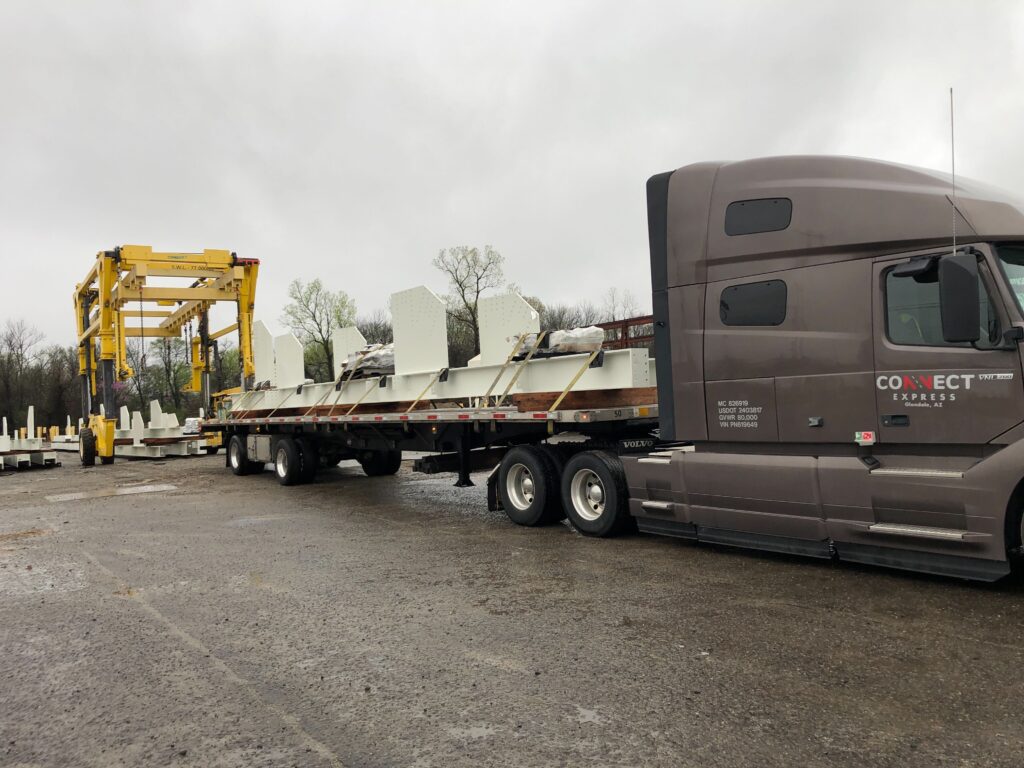
The pathway to solidifying your status as a commercial driver starts with a comprehensive assessment of your qualifications against the backdrop of industry standards. To ensure competitive edge and desirability, ensuring your CDL is complemented by endorsements, like HAZMAT or Tanker, becomes a strategic imperative.
Selecting pursuits that align with your credentials and expertise is paramount. Be prompt and deliberate in your application process, leveraging a detailed resume and a cover letter that encapsulates your prowess in the complex realm of commercial driving.
Effective Job Searching
In the high-demand world of CDL driving, precision and efficacy are pivotal.
To navigate, a strategic approach to job seeking is a quintessential part of a driver’s professional toolbox. An organized job search, underscored by targeted applications, enhances a driver’s prospects significantly. It involves identifying positions that align with one’s qualifications, leveraging industry connections, and systematically applying. This meticulous process not only saves time but amplifies the likelihood of securing a fitting position.
Consequently, drivers should utilize reputable job boards and resources specific to the transportation sector. A well-curated online profile on such platforms, highlighting endorsements and special certifications, can serve as a persistent beacon to potential employers. Networking, both digitally and in person at industry events, can also unearth opportunities that might not be widely advertised.
Ultimately, persistence and consistency are the crux of a successful job search. A disciplined approach to sending out resumes, preparing for interviews, and follow-ups could make a notable difference. Regularly updating skills and endorsements, as well as maintaining an active presence in professional circles, are strategies that can keep one’s candidacy in the forefront of recruiters’ minds, ultimately resulting in an expedited employment outcome.
Application Process
Embark on your quest for a CDL driver position by thoroughly preparing the necessary documentation and credentials.
- Ensure that your Commercial Driver’s License (CDL) is current and valid.
- Compile your driving record, highlighting any specialized experience or clean driving history.
- Prepare professional references and contact details for past employers.
- Gather any additional certifications or endorsements that may bolster your application.
- Update your resume with recent experience and relevant skills.
After initial preparations, submit your application through the prospective employer’s preferred channel.
The final step often includes interviews and further verifications, setting the course for your potential new role.
Ace the Interview
Your interview is a pivotal moment to validate your proficiency and commitment to the flatbed trucking industry.
- Research the Company: Demonstrate your diligence by understanding the company’s mission, fleet, and values.
- Prepare Responses: Anticipate common interview questions and articulate your experience with cargo securement and safety protocols.
- Showcase Certifications: Highlight relevant endorsements like Hazardous Materials (HazMat) or Tanker that set you apart.
- Discuss Scenarios: Be ready to discuss past experiences that showcase your problem-solving and decision-making skills on the road.
- Ask Insightful Questions: Engage with the interviewer by asking about company culture, route specifics, or professional development opportunities.
Expressing your dedication to safety and efficiency resonates with potential employers.
Arrive on time, dressed professionally, and with a mindset geared toward conveying reliability and expertise.
What is the highest paying CDL driving job?
- Oil and gas hauling
- Oversized load hauling
- Hazmat trucking
- Ice road trucking
- Auto transport
- Heavy equipment hauling
- Team driving
- Refrigerated trucking
What states pay CDL drivers the most?
When it comes to the states that pay CDL drivers the most, there are a few standouts. California, Texas, and Illinois are known for offering higher salaries for CDL drivers. These states have a strong demand for trucking services and tend to have higher living costs, which often translates to higher pay for CDL drivers.
In California, CDL drivers can expect to earn some of the highest wages in the industry. The state has a large population and a strong economy, which drives the demand for goods transportation. CDL drivers in California enjoy higher wages to compensate for the higher taxes and living expenses in the state.
Texas is another state where CDL drivers can find higher pay. With its vast size and diverse industries, Texas offers ample opportunities for CDL drivers to find well-paying jobs. The demand for trucking services is high, particularly in major cities like Houston and Dallas.
Illinois is also known for providing competitive wages to CDL drivers. The state’s central location makes it a transportation hub for goods moving across the Midwest and beyond. The high demand for trucking services in Illinois leads to higher pay for CDL drivers.
It’s important to note that the wages for CDL drivers can vary depending on factors such as experience, type of trucking job, and specific employer. While these states generally have higher pay for CDL drivers, it’s always recommended to research and compare pay rates based on individual circumstances and preferences.
How much do local truck drivers make in California?

Local truck drivers in California can earn a competitive salary. In 2016, according to industry data, the average annual salary for local truck drivers in California was around $47,000. However, it’s worth noting that salaries can vary depending on factors such as experience, qualifications, and the company they work for.
In recent years, there has been an increased demand for local truck drivers in California due to the growth of industries such as e-commerce and construction. This has contributed to a positive job outlook and potential for higher earning potential in the field.
It’s important to keep in mind that local truck drivers are typically paid an hourly rate, and the amount they earn can be influenced by factors such as the number of hours worked, overtime pay, and any additional benefits or incentives offered by their employer.
Overall, local truck driving can be a rewarding career choice in California, offering steady employment and a competitive salary. However, it’s important for individuals interested in pursuing this profession to thoroughly research the specific pay rates and opportunities available within their area and industry.


